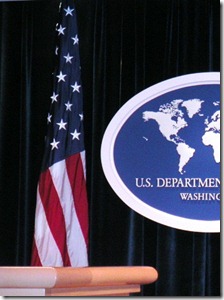 The Foreign Service Journal has featured my book Real Dreams: Thirty Years of Short Stories in its annual “In Their Own Write” compilation of books published by Foreign Service-affiliated authors in 2012. The Foreign Service Journal writes of Real Dreams (p. 49):
The Foreign Service Journal has featured my book Real Dreams: Thirty Years of Short Stories in its annual “In Their Own Write” compilation of books published by Foreign Service-affiliated authors in 2012. The Foreign Service Journal writes of Real Dreams (p. 49):
Mike Edwards wrote these 15 short stories over a period of 30 years, beginning in his youth. He covers a wide variety of themes and topics inspired by dreams and experiences over those years.
These stories encompass a boy’s fantasies and an adult man’s maturation. A young boy finds himself the protector of genetically modified army ants that have escaped from the military. An old woman considered to be mentally ill may have reason for her outbursts, while a prisoner of war writes letters of hope from his Nazi concentration camp during World War II. And a gloomy maintenance man turns out to have a terrifying history.
Real Dreams is a collection of stories I wrote between 1981 and 2011. Each reflects changes in my writing style and interests over time. I wrote the earliest story, “How Little Big Chief Calmed the Mountain,” as a young student, and the latest, “Evil | Live,” three decades later. The book is a story sampler rather than a cohesive anthology. The stories are grouped by genre. You will find some common themes, including hope, dreams, light, darkness, perseverance, and spirituality, wrapped up in some novel ideas. In some stories, the reader is left to ponder their deeper meaning. I hope you enjoy these diverse and timeless works three decades in the making.
Thank you, Foreign Service Journal, for including Real Dreams on your 2012 list. I am grateful that my book joined other superb works written by Foreign Service colleagues and alumni. I encourage readers to browse the books featured in “In Their Own Write” and read the Journal to learn more about the Foreign Service.
Real Dreams is available to purchase as an e-book or in print from these booksellers:
U.S. Booksellers
 Available to purchase as an e-book for US$2.99:
Available to purchase as an e-book for US$2.99:
Amazon.com for Kindle
Apple iTunes for iPad/iPhone
Baker & Taylor for Blio e-reader
Barnes & Noble for Nook
Diesel Ebooks for iPad and other e-readers
Google Play for Android
Kobo Books for Kobo e-reader
Smashwords for iPad and other e-readers
Sony ReaderStore for Sony e-reader
Available in print for US$8.99:
Amazon.com
Createspace–
International Booksellers
Available as an e-book or in print (prices vary by format and local currency):
Amazon.co.uk (United Kingdom)
Amazon.fr (France)
Amazon.de (Austria and Germany)
Amazon.it (Italy)
Amazon.co.jp (Japan)
Amazon.es for Kindle (Spain)
Available as an e-book:
Barnes & Noble for Nook (United Kingdom)
Visit my websitefor a complete list of booksellers.
About the Foreign Service Journal
The Foreign Service Journal covers foreign affairs from an insider’s perspective, providing thoughtful articles on international issues, the practice of diplomacy and the U.S. Foreign Service. The Journal is published monthly (July/August issues combined) by the American Foreign Service Association (AFSA). The November issue features its annual “In Their Own Write” compilation, the largest edition yet, with some 90 new books by Foreign Service-affiliated authors. The list spans almost every conceivable literary genre: from history and foreign policy to memoirs and biographies, and from novels and short stories to mysteries and how-to books.
About the American Foreign Service Association
Established in 1924, AFSA is the professional association of the United States Foreign Service. With close to 16,000 dues-paying members, AFSA represents over 28,000 active and retired Foreign Service employees of the Department of State, Agency for International Development (AID), Foreign Agricultural Service (FAS), Foreign Commercial Service (FCS), and International Broadcasting Bureau (IBB).
Click here to read the original post on my blog, World Adventurers.
 M.G. Edwards is a writer of books and stories in the mystery, thriller and science fiction-fantasy genres. He also writes travel adventures. He is author of Kilimanjaro: One Man’s Quest to Go Over the Hill, a non-fiction account of his attempt to summit Mount Kilimanjaro, Africa’s highest mountain, a collection of short stories called Real Dreams: Thirty Years of Short Stories and Alexander the Salamander, a children’s story set in the Amazon. His books are available to purchase as an e-book and in print from Amazon.com and other booksellers. He lives in Bangkok, Thailand with his wife Jing and son Alex.
M.G. Edwards is a writer of books and stories in the mystery, thriller and science fiction-fantasy genres. He also writes travel adventures. He is author of Kilimanjaro: One Man’s Quest to Go Over the Hill, a non-fiction account of his attempt to summit Mount Kilimanjaro, Africa’s highest mountain, a collection of short stories called Real Dreams: Thirty Years of Short Stories and Alexander the Salamander, a children’s story set in the Amazon. His books are available to purchase as an e-book and in print from Amazon.com and other booksellers. He lives in Bangkok, Thailand with his wife Jing and son Alex.
For more books or stories by M.G. Edwards, visit his web site at www.mgedwards.com or his blog, World Adventurers. Contact him at me@mgedwards.com, on Facebook, on Google+, or @m_g_edwards on Twitter.
© 2012 Brilliance Press. All rights reserved. No part of this work may be reproduced or transmitted without the written consent of the author.
Technorati DBPTZXKSVDZZ






